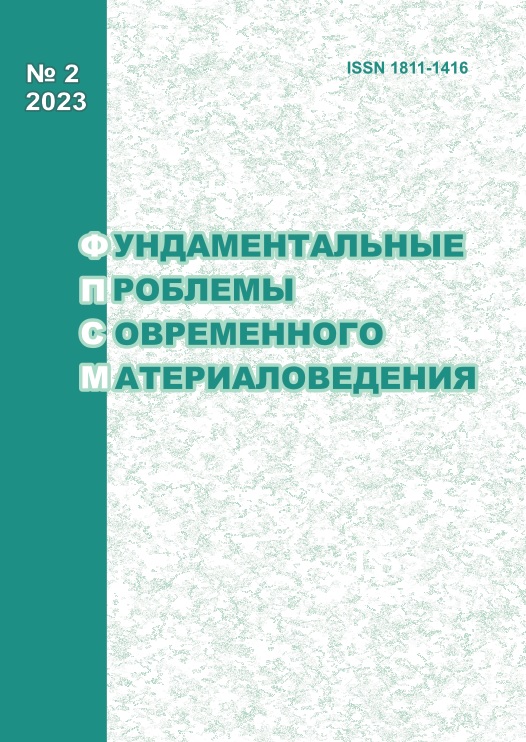ИССЛЕДОВАНИЕ ВЛИЯНИЯ ТЕРМИЧЕСКОЙ ОБРАБОТКИ НА СПЛАВЫ СИСТЕМЫ Al–Mg–Si С ИЗБЫТКОМ КРЕМНИЯ, ЛЕГИРОВАННЫЕ НЕБОЛЬШИМИ СКАНДИЙ-ЦИРКОНИЕВЫМИ ДОБАВКАМИ
10.25712/ASTU.1811-1416.2023.02.014
Ключевые слова:
алюминиевый сплав, термическая обработка, наночастицы, просвечивающая микроскопияАннотация
В работе исследовано влияние термической обработки на физико-механические свойства и наночастицы сплавов системы Al–Mg–Si с малыми скандий-циркониевыми добавками и избытком кремния. Для исследования сплавы были отлиты и подвергнуты термической обработке в температурном диапазоне 360-440 ºС, выдержке в интервале от 10 сек до 50 часов. После термической обработки сплавы исследовались с помощью просвечивающей микроскопии, а также в них определялась микротвердость. Исследования позволили установить, что во всех сплавах при отжиге формируются наночастицы (AlSi)3Sc. Однако в сплавах с меньшим содержанием скандия (0,05 %) данные частицы появляются на более поздних стадиях термической обработки в результате непрерывного распада пересыщенного твердого раствора. Скандий в данных сплавах на начальных стадиях термической обработки расположен в пересыщенном твердом растворе, что и позволяет происходить непрерывному распаду. В то же время в сплавах с содержанием скандия 0,3 % частицы (AlSi)3Sc появляются уже непосредственно после литья и при последующем отжиге лишь увеличиваются в размерах. В начале отжига наблюдается падение микротвердости, происходящее, по всей видимости, в результате перехода упрочняющих частиц β’’(Mg5Si6), образующихся при неизбежном естественном старении в фазу Mg2Si. В целом температура 440 °С более благоприятна для отжига, так как частицы (AlSi)3Sc формируются в этом случае быстрее.











 Журнал «Фундаментальные проблемы современного материаловедения»
Журнал «Фундаментальные проблемы современного материаловедения» Контент доступен под лицензией
Контент доступен под лицензией 
